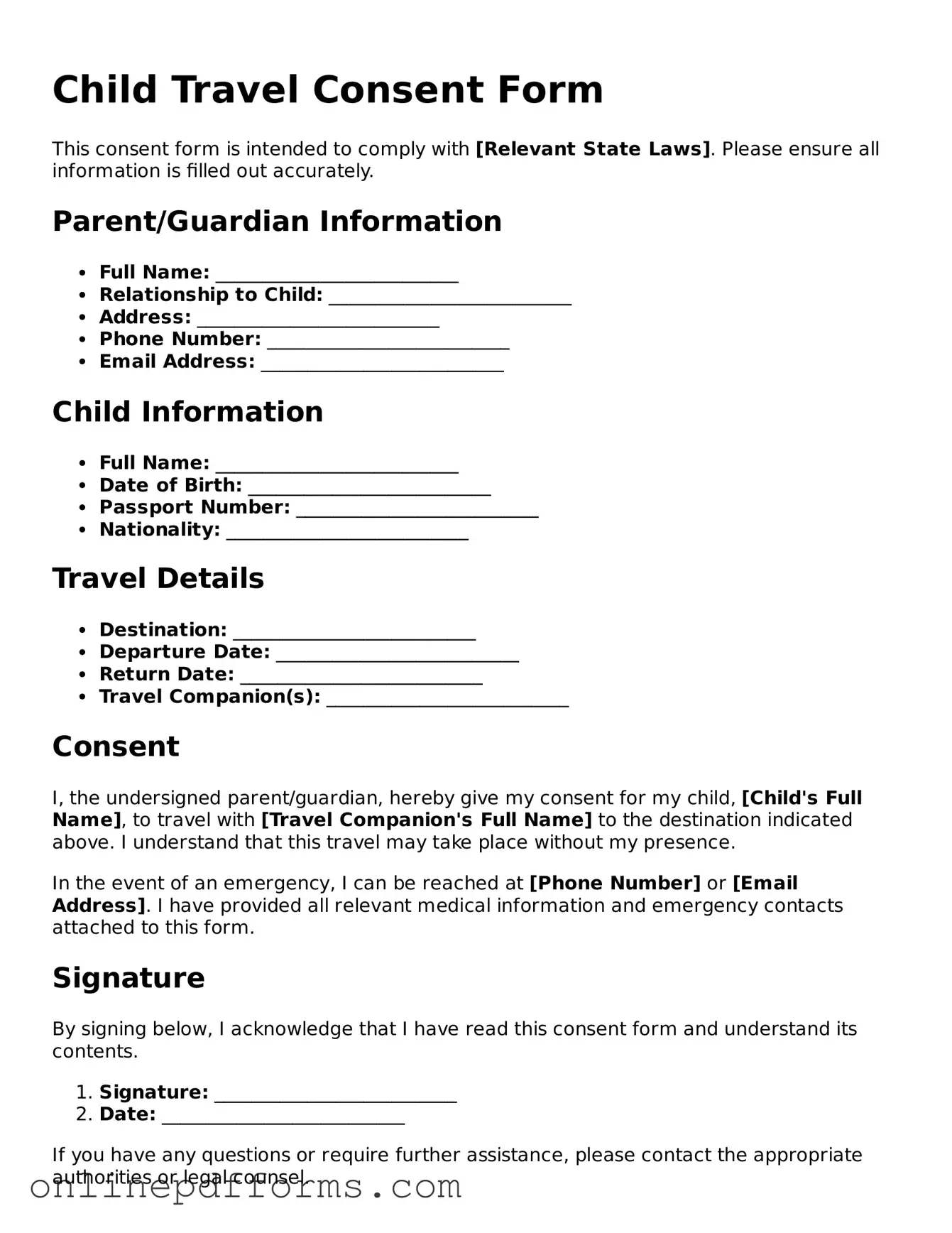Legal Child Travel Consent Form Form
The Child Travel Consent Form is a legal document that grants permission for a minor to travel without one or both parents or legal guardians. This form is essential for ensuring that children can travel safely and legally, especially when crossing international borders. To facilitate travel arrangements, it is important to complete this form accurately.
Fill out the form by clicking the button below.
Open Child Travel Consent Form Editor Now
